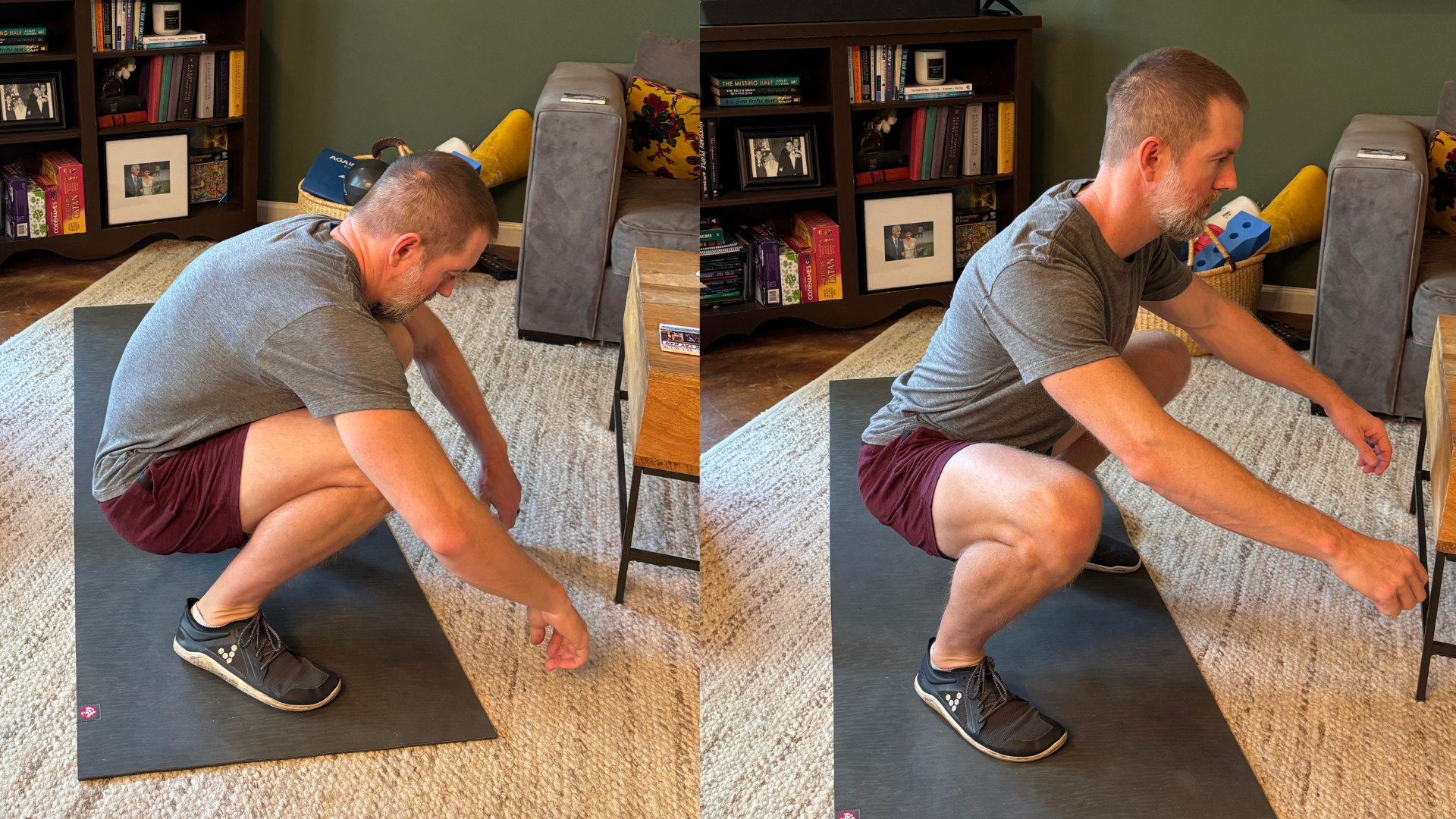What's On My Mind - September 2023
What’s On My Mind - September 2023
This Month’s Health Challenge
Create Walking Habits
A Fitness Trend I’m Noticing
Elite Athletes’ Habit of Performing Post-Meal Walks
A Study that Interested Me
A potent physiological method to magnify and sustain soleus oxidative metabolism improves glucose and lipid regulation
A Myth that Needs to Be Busted
“10k Steps is Just a Made Up Number & Doesn’t Matter”
A Book/Podcast Episode/Video/Article that Interested Me
Unconventional Medicine
This Month’s Health Challenge
Create Walking Habits
Studies show that the negative consequences of being sedentary throughout the day, not only are not negated by exercise, but actually blunt the metabolic effects we would expect to get from exercise. By creating walking habits, the goal is to break sedentary hours with an elevated heart rate and non-fatiguing muscle contractions. The heart is the primary driver of blood flow and muscle contractions not only increase heart rate, but are the primary drivers of pushing lymphatic fluid (to oversimplify: waste fluid) through our lymph system.
Two easy to track methods we like are
Using a step counter to accumulate 10,000 or more steps each day and
walking for 10 minutes after meals.
Really, there are many methods you can use that will have significant impacts here, so whatever methods you choose, keep the goal in mind: to break sedentary hours and to assist your body’s regulation of blood sugar after meals. Habits that target this can have enormous benefits on recovering from workouts and overall health.
A Fitness Trend I’m Noticing
Elite Athletes’ Habit of Performing Post-Meal Walks
In listening to podcasts and reading from coaches of world-class athletes, within the last year I have really noticed an uptick in coaches who have their athletes walk after all of their meals. Two extreme examples that I think are worth noting:
In the sport of Strongman, additional body fat not only is not a detriment to the sport, but some lifts actually rely on resting the weight on top of large bellies. I am even hearing coaches of world class Strongman athletes promoting going for walks. For them, the recovery boost from blood flow is second to the wide range of health factors that are dramatically improved with improved insulin sensitivity, and even these massive humans have learned that health boosts performance.
In the Tour de France, where cyclists compete in twenty one, 100+ mile stage races in a row with only 2 rest days mixed in, managing fatigue and recovery is at a premium. Imagine having competed in 11 x 5+ hour bike races in the last 12 days, with 10 more bike races to come in the upcoming days, and having your coach have you walk for 10 minutes after your dinner when all you want to do is go to bed. That is how important walking after meals is to these world class coaches. It’s not just something they do during training, but during the event itself.
It is extremely common for the tips and tricks of the elite athletes to look exactly like the tips and tricks for people just looking to be healthy. This is at the core of the MovementLink method - the healthier our body is, the more able we are to recover and adapt from challenging exercise, which means results don’t just come fast, but ceilings are removed and it’s all done in a sustainable way. We don’t have to choose between health or performance, we can have both.
A Study that Interested Me
Marc T. Hamilton, Deborah G. Hamilton,and Theodore W. Zderic
iScience. 2022 Sep 16
This study shows the impact flexing your calves can have on your blood and lymph flow. By sitting at your desk and lifting your heels on and off the floor (sort of like mimicking walking), there are meaningful impacts to health. So, if you find yourself stuck at your desk unable to take your walks, these “soleus push-ups” as Dr. Andrew Huberman calls them, can be your back-up plan.
Participants with 270 cumulative minutes (4.5 hours) of these heel raises (or soleus push-ups) across the day “experienced dramatic improvements in blood sugar regulation and in metabolism.” Making non-scientific inferences here, 4.5 hours of soleus push-ups seems to have similar benefits to walking 10,000 steps in a day. But, the walking would take half the time, so if you were going to replace a 10 minute walk after a meal with soleus push-ups at your desk, my made-up math here would say that 20 minutes would likely be an adequate dosage.
There are tons of additional benefits that come from being outside like sun exposure, the stress-relieving impacts of horizontal eye movements, and benefits that come from disconnecting from your desk, so we still recommend trying to get outside for walks, but this can be a great back-up plan.
A Myth that Needs to be Busted
Myth: 10,000 Steps a Day is a Made up Number and Doesn’t Matter
There is some validity to this statement as 10,000 steps a day was created by a company in Japan selling pedometers. But, just because this started as a marketing campaign and there are many different ways to get the same benefits without taking 10,000 steps, it’s not a pass to be sedentary and shouldn’t hold us back from being proactive to avoid the negative health impacts of accumulating sedentary hours. So, 10k steps may kind of be a made up number, but at the same time, it has been shown now to have an incredible impact on your health.
https://chriskresser.com/how-many-steps-should-you-get-in-a-day/
“But how many steps are enough? Under 5,000 steps per day might be detrimental to bone mass. Achieving at least 7,500 steps could help with weight loss and improve sleep. And the 10,000-step cutoff might be appropriate for decreasing cardiovascular disease risk, at least in men.
But do we see benefits above 10,000 steps? One study continued to show heart benefits at daily steps up to and beyond 12,500 in men, while the relationship between step count and cardiovascular disease risk in women wasn’t as linear. For postmenopausal women to achieve healthy weight, 12,500 steps might be required. And, a recent study looking at postal workers showed that only those who walked over 15,000 steps per day or spent seven hours per day upright had zero features of metabolic syndrome.”
Keep in mind that it’s not the number of steps you take in a day that is important here, but it’s the intent behind the 10k steps a day goal: to provide you with a walking goal that forces you to break sedentary hours. For some, tracking 10k steps a day works great. For others, a goal of simply breaking sedentary hours by raising your heart rate and walking 10 minutes after meals can get similar benefits to those who feel time crunched. To break sedentary hours, you can do the soleus push-ups from above, perform 20 air squats fast, do 10 burpees, run up and down your stairs 5 times, go for a 5-10 minute walk, or other similar little things that bring your heart rate up. Just find a way to move throughout the day.
A Book/Article/Podcast/Video that I’d Highly Recommend
Because I used a Chris Kresser quote above to help bust a myth, his book, Unconventional Medicine, is top of mind. I loved this book as it has an inspiring perspective that motivated me to take ownership of my health and wellness, getting me to think in a root-cause type of way instead of relying solely on medications to fix my issues. Looking back now, it’s obvious to me that a root cause approach to our own health is optimal. If my diet or lifestyle is causing me to have a health issue, taking medications, which have their own side effects, to treat the symptoms of an issue caused by my behavior is not actually doing anything to fix my health. Modern medications are incredible inventions and play an important role in our lives and healthcare, but should not be the only tool we use to improve our health.
From Amazon:
“The world is facing the greatest healthcare crisis it has ever seen. Chronic disease is shortening our lifespan, destroying our quality of life, bankrupting governments, and threatening the health of future generations. Sadly, conventional medicine, with its focus on managing symptoms, has failed to address this challenge. The result is burned-out physicians, a sicker population, and a broken healthcare system.In Unconventional Medicine, Chris Kresser presents a plan to reverse this dangerous trend. He shows how the combination of a genetically aligned diet and lifestyle, functional medicine, and a lean, collaborative practice model can create a system that better serves the needs of both patients and practitioners.The epidemic of chronic illness can be stopped, if patients and practitioners can adapt.”
Quote of the Month
“Another reason that conventional medicine hasn’t been successful is that it focuses on suppressing symptoms rather than addressing the underlying cause of disease.”
― Chris Kresser










